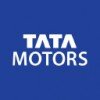Filter interviews by
Daimler Truck Interview Questions and Answers
28 Interview questions
Stack variable is present in the stack segment of memory.
Stack variables are local variables declared inside a function and are stored in the stack segment of memory.
Stack memory is used for function calls and local variables, and is managed in a Last In First Out (LIFO) manner.
Example: int x; is a stack variable declared inside a function.
Activity life cycle in Android refers to the sequence of states an activity goes through from creation to destruction.
Activity life cycle consists of several states such as onCreate, onStart, onResume, onPause, onStop, onDestroy, etc.
onCreate() is called when the activity is first created, onStart() is called when the activity becomes visible to the user, onResume() is called when the activity starts interacting w...
Components of Android include activities, services, content providers, and broadcast receivers.
Activities: User interface components that represent a single screen with a user interface.
Services: Background tasks that run independently of the UI.
Content Providers: Manage a shared set of app data.
Broadcast Receivers: Respond to system-wide broadcast announcements.
Implementation patterns in Android are design patterns that help in structuring and organizing code for better maintainability and scalability.
MVC (Model-View-Controller) pattern separates the application into three main components to improve code organization and reusability.
MVVM (Model-View-ViewModel) pattern separates the UI logic from the business logic, making it easier to test and maintain.
Singleton pattern ...
My expected CTC is based on my experience, skills, and the market rate for the position.
Consider my years of experience in the industry.
Research the current market rate for Technical Lead positions in the industry.
Factor in my skills and expertise that I bring to the role.
Be open to negotiation based on the overall compensation package offered.
SDLC methods are structured approaches to software development, ensuring quality and efficiency throughout the development process.
Waterfall model: Sequential approach with distinct phases like requirements, design, implementation, testing, and maintenance.
Agile: Iterative and incremental development, focusing on flexibility and customer collaboration.
Scrum: Agile framework with roles like Scrum Master, Product Ow...
p value is a statistical measure that helps determine the significance of results in hypothesis testing.
p value is the probability of obtaining results at least as extreme as the observed results, assuming the null hypothesis is true.
A p value of less than 0.05 is typically considered statistically significant.
It is used to determine whether to reject the null hypothesis in hypothesis testing.
The smaller the p val...
Multicollinearity is a phenomenon in which two or more predictor variables in a multiple regression model are highly correlated.
Multicollinearity can lead to issues in the interpretation of regression coefficients, as it becomes difficult to determine the individual impact of each predictor variable on the outcome.
It can inflate the standard errors of the coefficients, making them unstable and unreliable.
Multicoll...
The design process for a smartwatch involves user research, ideation, prototyping, testing, and iteration.
Conduct user research to understand user needs and preferences
Generate ideas through brainstorming sessions and sketching
Create prototypes to visualize and test concepts
Gather feedback from users through usability testing
Iterate on the design based on feedback and testing results
Sheetmetal is preferred over casting due to cost-effectiveness, faster production, design flexibility, and recyclability.
Sheetmetal is cost-effective compared to casting as it requires less material and energy for production.
Sheetmetal parts can be produced faster than cast parts, making it ideal for mass production.
Sheetmetal allows for greater design flexibility and customization compared to casting.
Sheetmetal i...
Daimler Truck Interview Experiences
38 interviews found
I applied via Campus Placement and was interviewed in Dec 2024. There were 4 interview rounds.
I was a fresher and needed to pass the APIT rounds.
They ask questions based on their requirements
(1 Question)
- Q1. Discussion about general technical concept
(1 Question)
- Q1. General Hr questions
I applied via Recruitment Consulltant and was interviewed in Sep 2024. There was 1 interview round.
(4 Questions)
- Q1. OOPS,about project , how we do deployment process
- Q2. SQL server , schedule jobs , whihc hosting server we use
- Q3. Common interview questions on dot net and confidence
- Q4. Job profile is of desktop application
I applied via Campus Placement and was interviewed in Oct 2024. There were 4 interview rounds.
All are MCQ questions followed by 2-3 coding questions .
Duration is 45 mins and 2-3 coding questions.
(1 Question)
- Q1. All about topics mentioned in resume.
(1 Question)
- Q1. Actually it is a management round so they asked technical questions along with hr questions.
Interview Preparation Tips
- Python
- DSA
- SQL
(2 Questions)
- Q1. Explain about activity life cycle
- Q2. What are the components of Android
- Ans.
Components of Android include activities, services, content providers, and broadcast receivers.
Activities: User interface components that represent a single screen with a user interface.
Services: Background tasks that run independently of the UI.
Content Providers: Manage a shared set of app data.
Broadcast Receivers: Respond to system-wide broadcast announcements.
(2 Questions)
- Q1. What if Flow in kotlin and why we use it, keywords of kotlin
- Ans.
Kotlin Flow is a reactive stream library in Kotlin for handling asynchronous data streams.
Kotlin Flow is used for handling asynchronous data streams in a sequential and non-blocking manner.
It provides a way to emit multiple values asynchronously and handle backpressure.
Keywords in Kotlin include suspend, flow, collect, emit, filter, map, etc.
- Q2. Explain about implementation patterns present in Android
- Ans.
Implementation patterns in Android are design patterns that help in structuring and organizing code for better maintainability and scalability.
MVC (Model-View-Controller) pattern separates the application into three main components to improve code organization and reusability.
MVVM (Model-View-ViewModel) pattern separates the UI logic from the business logic, making it easier to test and maintain.
Singleton pattern ensur...
Skills evaluated in this interview
(1 Question)
- Q1. Stack variable is present in which segment
- Ans.
Stack variable is present in the stack segment of memory.
Stack variables are local variables declared inside a function and are stored in the stack segment of memory.
Stack memory is used for function calls and local variables, and is managed in a Last In First Out (LIFO) manner.
Example: int x; is a stack variable declared inside a function.
Skills evaluated in this interview
(2 Questions)
- Q1. Related to redis caching
- Q2. About Kafka non syncronous processing
- Ans.
Kafka enables non-synchronous processing through its publish-subscribe model, allowing decoupled communication between producers and consumers.
Kafka uses a distributed commit log, allowing producers to send messages without waiting for consumers to process them.
Producers can publish messages to Kafka topics, and consumers can read them at their own pace, enabling asynchronous processing.
This decoupling allows for high ...
(2 Questions)
- Q1. Why you want to switch
- Q2. Salary expectation
- Ans.
I expect a competitive salary based on my skills, experience, and market standards for Java Developers.
Research industry standards: For example, average salaries for Java Developers in my region.
Consider my experience: With 5 years of experience, I would expect a salary in the range of $80,000 to $100,000.
Factor in company size: Larger companies often offer higher salaries and better benefits.
Discuss growth opportuniti...
(2 Questions)
- Q1. What are Sdlc methods ?
- Ans.
SDLC methods are structured approaches to software development, ensuring quality and efficiency throughout the development process.
Waterfall model: Sequential approach with distinct phases like requirements, design, implementation, testing, and maintenance.
Agile: Iterative and incremental development, focusing on flexibility and customer collaboration.
Scrum: Agile framework with roles like Scrum Master, Product Owner, ...
- Q2. Powertrain knowledge relevant questions
(1 Question)
- Q1. What is your Expected ctc?
- Ans.
My expected CTC is based on my experience, skills, and the market rate for the position.
Consider my years of experience in the industry.
Research the current market rate for Technical Lead positions in the industry.
Factor in my skills and expertise that I bring to the role.
Be open to negotiation based on the overall compensation package offered.
I applied via Recruitment Consulltant and was interviewed in Feb 2024. There were 4 interview rounds.
(2 Questions)
- Q1. Development of Organisation and Profits
- Ans.
Development of organisation and profits are closely linked, with growth in one often leading to growth in the other.
Implementing strategic planning to drive growth and profitability
Investing in employee training and development to increase productivity
Expanding market reach through effective marketing and sales strategies
Optimizing operational processes to reduce costs and improve efficiency
- Q2. Case Study and Cost Savings
(1 Question)
- Q1. Global Sourcing
(1 Question)
- Q1. To Achieve Targets
Target setting and goals
(3 Questions)
- Q1. Pick up a system/ component that you developed and take us through the product development process and your key contributions in each step.
- Q2. What are the Components/ systems you worked on?
- Ans.
I have worked on designing components and systems for various industries including automotive, aerospace, and consumer electronics.
Designed automotive engine components for improved performance and efficiency
Developed aerospace systems for navigation and communication
Created consumer electronics products with focus on user experience and functionality
- Q3. Explain FMEA process
- Ans.
FMEA is a systematic method for identifying and preventing potential failures in a product or process.
FMEA stands for Failure Mode and Effects Analysis
It involves identifying potential failure modes, their causes, and the effects of these failures
Risk priority numbers (RPN) are calculated to prioritize which failures to address first
Actions are then taken to mitigate or eliminate the identified risks
FMEA is commonly us...
Interview Preparation Tips
I applied via Walk-in and was interviewed before Jan 2024. There were 4 interview rounds.
(2 Questions)
- Q1. Basic cybersecurity questions
- Q2. Saml
(2 Questions)
- Q1. About Oauth and types
- Q2. OIDC
(2 Questions)
- Q1. Client credential flow
- Q2. SAML types
(2 Questions)
- Q1. Salary negotiation
- Q2. Why DTICI
- Ans.
DTICI offers a diverse range of projects and clients, providing opportunities for growth and learning.
DTICI has a strong reputation in the industry for delivering high-quality consulting services.
The company values innovation and encourages employees to think outside the box.
DTICI offers a supportive and collaborative work environment, fostering professional development.
The company has a global presence, allowing for e...
Top trending discussions






Daimler Truck Interview FAQs
The duration of Daimler Truck interview process can vary, but typically it takes about less than 2 weeks to complete.
Tell us how to improve this page.
Daimler Truck Interviews By Designations
- Daimler Truck Senior Consultant Interview Questions
- Daimler Truck Software Engineer Interview Questions
- Daimler Truck Graduate Engineer Trainee (Get) Interview Questions
- Daimler Truck Senior Engineer Interview Questions
- Daimler Truck Graduate Trainee Interview Questions
- Daimler Truck Technical Lead Interview Questions
- Daimler Truck Java Developer Interview Questions
- Daimler Truck Design Engineer Interview Questions
- Show more
Interview Questions for Popular Designations
Overall Interview Experience Rating
based on 42 interview experiences
Difficulty level
Duration
Interview Questions from Similar Companies
Daimler Truck Reviews and Ratings
based on 307 reviews
Rating in categories
|
Senior Consultant
197
salaries
| ₹15.9 L/yr - ₹28 L/yr |
|
Senior Technical Lead
141
salaries
| ₹22.3 L/yr - ₹39.5 L/yr |
|
Senior Engineer
120
salaries
| ₹16.2 L/yr - ₹26 L/yr |
|
Principal Consultant
102
salaries
| ₹25 L/yr - ₹45 L/yr |
|
Senior Product Design Engineer
68
salaries
| ₹13.8 L/yr - ₹19.8 L/yr |

Tata Motors

Mahindra & Mahindra

Maruti Suzuki

Ashok Leyland
- Home >
- Interviews >
- Daimler Truck Interview Questions













